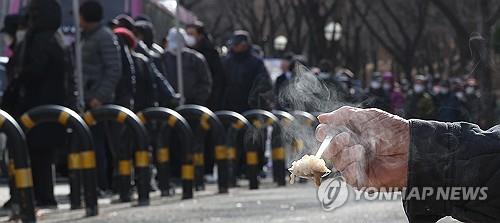Gov't proposes to raise pension contribution rate to 13 pct, differentiate pace of raising rate by age group

SEOUL, Sept. 4 (Yonhap) -- The government proposed raising the pension contribution rate to 13 percent from 9 percent and differentiating the pace of raising the contribution rate by age group, Health Minister Cho Kyoo-hong said, in what would be the biggest overhaul of the ailing pension system in 21 years.
Details of the proposal by the health ministry came less than a week after President Yoon Suk Yeol pledged to reform the pension system, presenting sustainability, fairness and income security as three key principles.
Under the proposal, wage earners will be required to pay 13 percent of their income, compared with the current 9 percent.
In an unprecedented measure, the pace of the increase in the rate will be differentiated. Starting next year, the contribution rate for people in their 50s will be increased by 1 percentage point per year.
That for people in their 40s will be increased by 0.5 percentage point per year. For people in their 30s and 20s, the contribution rate will be increased by 0.33 percentage point and 0.25 percentage point per year, respectively.
The reform proposal, however, is subject to approval by the National Assembly, where the main opposition party holds a majority. Nevertheless, it marked the first major government plan in 21 years to reform the pension system.
If the reform becomes a law, it would mark the first increase of the pension contribution rate in 27 years.
"The reform focuses on bolstering the sustainability of the pension so that all generations can share the benefits of the system," Cho told reporters.
"We have reviewed detailed measures to further secure the retirement lives of the people by considering equity among generations," he said.
In another major change, the nominal income replacement rate, which indicates the proportion of pre-retirement monthly wages covered by the pension, will be held at 42 percent without an additional cut.
The rate, initially set at 70 percent when the pension system was introduced in 1988, reached 50 percent in 2008, with the rate decreasing 0.5 percentage point annually, with a target of reaching 40 percent by 2028.
The government, however, said it has decided to maintain the 42 percent rate set for 2024, in response to public sentiment that income security is as important as the financial stability of the fund.
Established in 1988, South Korea's pension system was originally designed to guarantee a certain amount of income after retirement. With the nation rapidly aging and its birth rate plunging, worries have grown that the younger generation would not receive pension benefits despite their contributions.
Under the current system, the pension system is expected to go into a deficit in 2041 and completely run out in 2055, according to the National Pension Service.
The reform also includes plans to improve the investment returns of the fund.
As of 2023, the pension's average annual investment return was 5.92 percent, with the amount of the fund under management standing at 1,036 trillion won (US$772.5 billion).
The government said that the long-term investment return, currently set at 4.5 percent, will be raised to 5.5 percent.
To achieve this target, the government announced that the NPS will diversify its portfolio by including overseas and alternative investments. Additionally, it plans to recruit experts and establish overseas offices to support these initiatives.
The government said that through such reforms, the depletion of the fund could be delayed until 2072.
As the graying of South Korea accelerates, ministry officials said the government has considered increasing the mandatory subscription age for the pension fund to 64 from the current 59.
A potential increase of the pension subscription age is expected to fuel debates on raising the age of retirement, currently set at 60, analysts said.
The government also said it is considering introducing an "automatic adjustment (stabilization) system" for the pension fund. Under the system, pension benefits would be reduced if the pension fund's fiscal health significantly deteriorates.
"While the national pension currently raises payments each year based on inflation, if the new adjustment mechanism is applied, payments will also take demographic factors such as life expectancy and birth rates into account," Cho said.
Health authorities noted that 24 out of the 38 members of the Organization for Economic Cooperation and Development currently operate such a scheme.
Another proposal included in the reform plan is to clarify the government's commitment to guaranteeing pension payments, as the existing law only states the obligation to provide necessary policies for the fund's sustainability.
The government added that it will also raise the monthly basic pension provided to low-income seniors, currently set at 300,000 won, to 400,000 won, which was one of the Yoon government's policy goals.
Experts urged lawmakers to make efforts to ensure the future financing of the pension system.
"The National Assembly should take the lead in reaching an agreement," said Choi Young-jun, a professor of public policy studies at Yonsei University. "It would be appropriate for the administrative branch and the presidential office to humbly accept the result after lawmakers take responsibility and come up with a final resolution."
Lee Dah-mi, a researcher at the Korea Institute for Health and Social Welfare, said the odds of reforming the pension system would be low unless there is a consensus at the National Assembly.
colin@yna.co.kr
(END)





